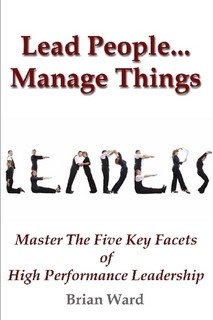Shortly after the Province let the air out of the tires of the Regional Government Review convoy, it announced another round of funding as part of the new “Municipal Modernization Program” (MMP). Small and rural municipalities across Ontario now have access to an additional $125 million through 2022-2023.
This new program allows municipalities to apply for funding to “undertake expenditure reviews with the goal of finding service delivery efficiencies and lowering costs in the longer term.”
Some of the criteria include the use of an independent third-party reviewer who would identify savings and efficiencies. These reviews could include; a line-by-line municipal budget review, a service delivery review, modernization/technology opportunities, and a review of administrative processes, all in an effort to create efficiencies and reduce costs.
The reviewer would present an actionable series of recommendations and the threshold for these reviews is anticipated to be between $20k and $200k.
The Province requires the municipality to provide the local Municipal Services Office with its intent to participate in the program by November 22, 2019 and there is a formal application (Expression of Interest Form) that the municipality must submit by December 6, 2019. The timelines are rather tight in that the work can start November 1, 2019 with the production of a final public report by June 30, 2020.
Each submission will be evaluated on a case-by-case basis and the Province determines which submissions are approved in the January – February 2020 time frame. The Province also requires the third-party reviewer’s draft report by June 15, 2020, with the intent that the final report would be posted publicly by the municipality by June 30, 2020.
If you are feeling somewhat rushed to make the timelines, the Province has also indicated a second round of applications will be considered in the spring/summer of 2020.
It’s rather unfortunate that the Province won’t make public their third-party reviewer’s report (Regional Government Review) so that municipalities could determine if some of the gems provided to the Province might be worth considering as part of this next phase of municipal modernization.
No doubt some of the suggestions made throughout the extensive consultation process may have provided some insight for the municipalities who now are tasked with establishing their priorities around the modernization program. Wouldn’t it have been great to capitalize on the work of Mr. Fenn and Mr. Seiling and launch into initiatives that had already been vetted by independent third-party reviewers?
Ontario is approximately $350+ billion in debt and once again committed millions more of taxpayers’ dollars to municipalities to look to find efficiencies and reduce costs.
At the end of this regional government review process the Province backed off and did not advance anything meaningful despite the expectations that changes would be forthcoming.
In an era of outdated governance models, aging infrastructure, strained debt capacity and lack of funding for programs and services, who are we kidding here?
Why do we still need to kick the tires?
Just saying…
So don’t, miss out on your chance, don’t let the short timelines intimidate you.
You are encouraged to express your letter of intent followed by your formal application in order to be considered for these additional funds. After all you are no longer the passenger but instead you have the steering wheel in hand.
We work with several municipalities across the Province. We know that there is still so much that your organization can do in order; to streamline your processes, to create efficiencies, to source and implement new technologies, to better respond to your customers, to improve your programs and services, to explore shared services and to ultimately save $$$$.
“You can’t keep doing the same thing over and over again and expect different results.”
____________________________________________________

Using improvement methods of LEAN Six Sigma and AccessE11 technology we will make your organization; simpler, faster, better and less costly. We help you cut the red tape, remove the non-value-added activities and defects in your processes, improve customer service, help you to achieve measurable results and achieve a costs savings.
Contact us today at [email protected]


 If you have a waste management system that has an ECA (Environmental Compliance Approval) or registered EASR (Environmental Activity and Sector Registry), you will typically have a requirement for a certificate to be held in the waste transportation vehicle, indicating that the driver has received this training. The certificate must have specific information such as the driver’s name, the name of the business, the ECA or EASR number, it will also contain information such as the date the training was completed as well as the name and organization of the trainer that provided this training. The certificate should remain with the driver at all times while on-duty, as any regulatory officer can ask the driver to produce this card . Should the driver not have a compliant card or not have the card in his or her possession, fines can and will occur. It is also imperative that your company contacts the local municipality to find out what they consider hauled liquid waste, as this can vary from site to site.
If you have a waste management system that has an ECA (Environmental Compliance Approval) or registered EASR (Environmental Activity and Sector Registry), you will typically have a requirement for a certificate to be held in the waste transportation vehicle, indicating that the driver has received this training. The certificate must have specific information such as the driver’s name, the name of the business, the ECA or EASR number, it will also contain information such as the date the training was completed as well as the name and organization of the trainer that provided this training. The certificate should remain with the driver at all times while on-duty, as any regulatory officer can ask the driver to produce this card . Should the driver not have a compliant card or not have the card in his or her possession, fines can and will occur. It is also imperative that your company contacts the local municipality to find out what they consider hauled liquid waste, as this can vary from site to site.










.png)



